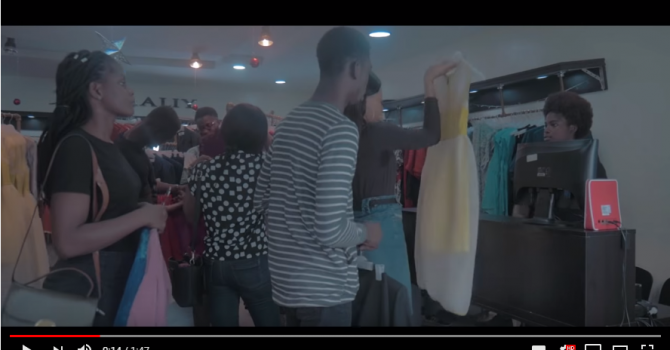One of the most commonly used terminologies in the world of modelling is “Model Statistics”. In modelling, Model Statistics or “Stats” for short, refers to the measurement of particular parts of the body. Having the right or required statistics as a model is the key to success. However, there are various types of modelling and someone who does not fit into the size requirement of one modelling type can fit into another. All models, whether aspiring, new or experienced models have to know their body statistics to boost their chances of getting the right modelling jobs and being signed by a good modelling agency.
In this blog post, we will show you what the common body statistics are and how you can measure yourself correctly to get accurate model statistics.
Common Model Statistics & How To Measure Yourself
Female models usually list their stats like height, bust, waist and hips. For male models, the prominent stats are height and chest size, but if you want to elaborate further, you can include your neck size, inside and outside leg length.
Your statistics can change as time goes on, so it is important that you check your stats every three months. Modelling agencies and brands use your stats to determine whether you are suitable for a particular project. There is also no point approaching a fashion designer that has a different height and bust requirements from yours, as the cloth would just not fit. Knowing your correct stats and having them available readily will save you further problems and stress later.
Here are the common statistics for male and female models and how to measure yourselves accurately.
1. Height
Your height is one of the most important determining factors as to whether a modelling job is right for you. For certain jobs such as catwalk modelling, height is the most sought-after feature of the model. As a result, employers want to know as quickly as possible what your height is. For example, for female models interested in catwalk modelling, the minimum recommended height is 5ft 9inches while that of a male model is 6ft 1inch. Height requirements vary from one modelling type to another and also differ by modelling jobs. So, even if you are not the right fit for one type of modelling, you can find other modelling niches where you fit.
To measure your height, stand upright against a wall (on a flat ground surface and with no footwear) and have someone place a ruler on the highest point of your head. Mark the point on the wall using a pencil, and then measure the distance from the floor to the mark using a measurement tape.
2. Weight
The next statistics to take note of is your weight. As weight is relative to height, taller models are more likely to weigh more than the shorter ones. Modelling agencies are more concerned about how healthy you look than they are with how trimmed you are, so don’t fret too much about your weight and make sure you get your statistics correct. Also, to improve and balance your weight stats, you should eat healthy so that you can look like the perfect model for the job. As with your height, you will find modelling jobs that fit your precise weight. Besides, the industry is leaning towards diversity and beginning to emphasize that models can vary in sizes rather than having only thin people on the runway or on editorials.
Weight may be a much bigger factor for male models as they are expected to have the right build. The main thing is to look thin and fit with your clothes on. The exact weight requirements differ from one agency to another, and from one client to another. However, male models are required to be between 70 KG (approx. 160 Pounds) and 80 KG (approx. 180 Pounds). It is safer if you are in the middle (75 KG or 170 Pounds) as you will get more modelling jobs that suit you. You need to stay lean, healthy and not too skinny. It’s okay to have some muscles or to tone your body but you need to look healthy. The bottom line is that clients want male models to look like people that their customers can identify with.
3. Bust/Chest
If you are a man, your bust refers to your chest. Your bust size (female models) or chest size (male models) is a very important statistics also, as it determines how well you fit into clothes at your bust or chest area. For female models, the right way to measure your bust is to place the tape around the fullest part of your bust, and this would be your nipple level. For male models, measure the widest part of your chest. Breathe in and out while you fit the tape in place. To ensure that your measurements are accurate, get someone to do it for you. That way, you will not have to twist your body while trying to measure properly at the same time.
4. Waist
The next item on your statistics is your waist measurement. Your waist is just between your hip bone and your last rib. While you put the tape around your waist, ensure that you breathe in and out. Your weight measurement can be improved by taking stomach exercises. So instead of lying about your measurements or not taking the measurements correctly, you should improve on your waistline.
5. Hips
Many female models take the measurements of their hips wrongly because they do not know where to place the tape. They often end up with a smaller hip size on their statistics. To get your hips measurement correctly, you should measure the fullest part of your hips in the same manner that you measured your bust. Keep your feet apart by your shoulder width while you take your hips measurement.
While these are the basic items on your model statistics, some models also list their dress size, shoe size, hair colour and eye colour. Make sure that your statistics is the same as what is included in your portfolio. The important thing is that you take your measurements correctly and not falsify the figures because the moment and experienced modelling cast or model booking assistant sees you, they would instantly know that your statistics are false. You could lose an exciting project as well as your integrity because of this.
You can take most of your measurements yourself or you can get someone do this for you to be more accurate. You can also have a professional fashion designer or tailor take the above measurements for you. Knowing your model statistics is essential to becoming a successful model.



